#tughril mahmut
Explore tagged Tumblr posts
Text
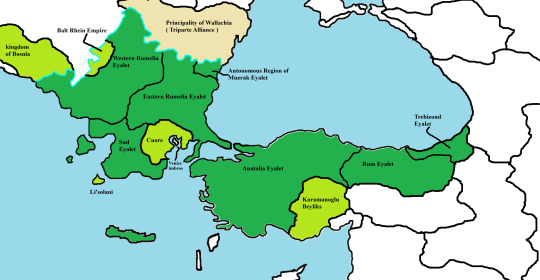
Ottoman eyalet division during Beyazid II Reign
Three days after his coronation as Sultan, on the 26th day of the month of Cinili, Bayazid II restructured the administrative and provincial divisions of the early classical Ottoman imperial system—one originally formed during the reign of his great-great-grandfather, Murad I. He institutionalized a three-tiered territorial hierarchy: the Eyalet, the Sanjakbey, and the Kazas ( jurisdiction ). The term eyalet had, in fact, appeared during the Stratocracy era but was not widely adopted. Most administrative regions during that time were governed under the title Vezir, in line with the parliamentary system then in use.
At the time of the empire’s transition, there were around thirteen Vezir Pashas in office. Bayezid II decided to drastically reduce their number to just five—though this number would later grow again in tandem with the empire’s expansion. Among those retained were Koca Davud Pasha (appointed as Grand Vizier, replacing Zaganos Pasha, and serving as head of the Divan council), Gedik Ahmed Pasha (who also took on the role of Kapudan Bahriye, replacing Hamza Pasha), Karaman Mehmed Pasha, Sinan Pasha, and Ahad Pasha. Although traditionally only vezirs were involved in the Divan meetings, during Bayazid II’s reign, participation expanded to include beylerbeys and even sanjakbeys.
Unlike the stratocracy era, where the Buyuk Pasha appeared openly in council, Bayazid’s reign followed the legal code instituted by Mehmed II, in which the sultan—and at times the valide sultan—observed the council meetings indirectly, hidden behind a latticed window. This practice endured until the reign of Süleyman I, who ultimately withdrew from council attendance entirely. Nevertheless, there are records of Bayezid II, on select occasions, presiding over the Divan in person and in full view.

The grille-covered window from which the Sultan or Valide Sultan could observe Council meetings and issue orders on some controversial or critical issues
In the reorganization of the provinces, Bayazid II divided the territories of Rumelia and Anatolia into three regions each, appointing new Pashas to govern the respective Eyalets.
In Rumelia:
The Western Rumelia Eyalet, with Gol as its provincial capital, was entrusted to Zaganos Pasha.
The Eastern Rumelia Eyalet, centered in Tarnovo, was assigned to Mahmud Pasha.
The Sud Eyalet, with Phoenicia as its administrative seat, was governed by Saruca Pasha.
Meanwhile, in Anatolia:
The Anatolia Eyalet, based in Bursa, was administered by Ahad Pasha.
The Rum Eyalet, with Amasya as its capital, was placed under Kassim Pasha.
As for Trebizond, Bayazid entrusted its command to his own son, Selim.
There existed an autonomous region within Eastern Rumelia known as the Mizrak Eyalet, governed by Mizraki Beyazid Pasha. He had already served during the Stratocracy era, originally appointed by Zaganos Pasha, and remained in power under the command of Sultan Bayazid II.
In the later years—specifically during the reign of Suleiman the Magnificent (Suleiman I)—the entire territory of Rumelia would eventually be unified into a single, centralized Eyalet. By this era, the Ottoman Empire had begun to establish a number of vassal states—subordinate nations that pledged loyalty to the Sultan, sent regular tributes, participated in military campaigns, and provided logistical support. Many of them also sold food supplies to Istanbul at reduced prices to support the Empire’s wartime efforts.
The first state to fall under this category was the Balt Rhain Empire, following the Treaty of Edirne. Under the Stratocracy, they were required to deliver formal tributes (jizyah) and special gifts to the Pashas. This arrangement was later reaffirmed during the transition into the Ottoman imperial model.
On the 1st of Biber, King Goldebalt IX visited Istanbul to personally swear allegiance to Sultan Bayazid II, and to present the empire’s first formal tribute, valued at 50,000 akçes.
The second was the Kingdom of Bosnia, which submitted as a vassal state barely a month after the end of the Balt Rhain - Turkish War. Soon after came Li’solani and Cuore.
Other states, such as the Despotate of Karaman (Karamanoglu Beyliks), were not obligated to pay tribute but were still bound by military duties. Cuore, on the other hand, was only required to pay a substantial tribute in exchange for being exempted from military obligations.
At this point in time, Wallachia was not yet considered an Ottoman vassal, as it remained part of the Tripartite Alliance with Venice, actively opposing Balt Rhain. However, that changed after the coup of Vlad Dracul. With Radu del Crumos ascending the throne (80–82 CTR), Wallachia formally became a vassal state under the Porte.
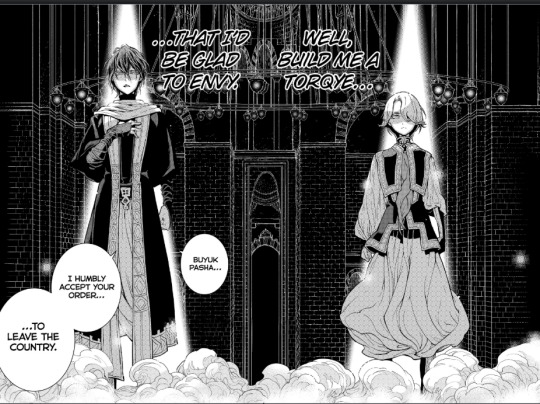
Zehir Zaganos (left) and Tughril Mahmud (right) were appointed by Bayezid II as Beylerbey of Western and Eastern Rumelia, respectively. However, their ranks did not equate to that of a Vezir. Although they were granted the right to participate in council meetings on a level comparable to a Vezir, both Zaganos and Mahmud—according to the account of Ekrem İmamoğlu—were not involved in Divan assemblies during the early years of Bayezid’s reign, except when summoned for matters of war and military expeditions, which fell under the primary responsibilities of a Beylerbey.The Kayitname (personal journal of Mahmud Pasha) records the following statement: “Since assuming this post, I have known nothing of the discussions held within the palace, save for those pertaining to war,” —indicating their exclusion from the inner political affairs of the imperial palace, until the later years of Bayezid II’s reign and the transitional period leading to the rule of his son, Selim I.
#shoukoku no altair#altair a record of battles#kotono kato#ottoman#fanfic#fanfiction#ottoman empire#tughril mahmut#zehir zaganos#rumelia#anatolia
29 notes
·
View notes
Text
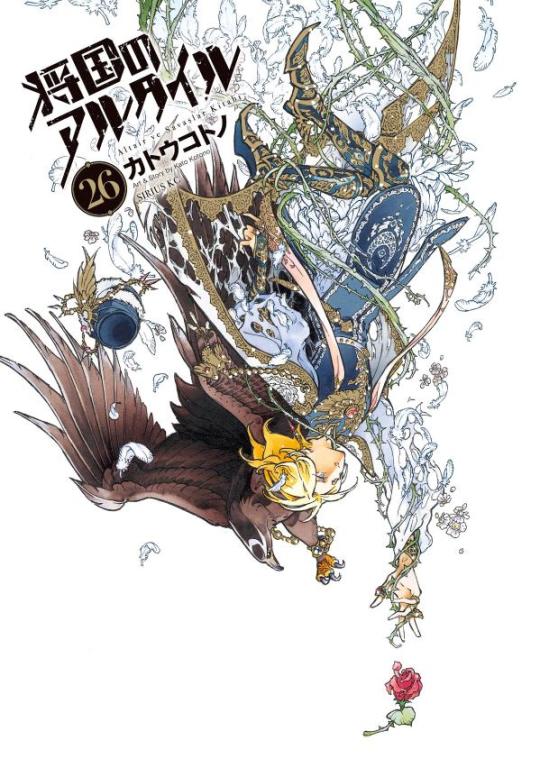
Shoukoku no Altair Volume 26 Cover
36 notes
·
View notes
Text
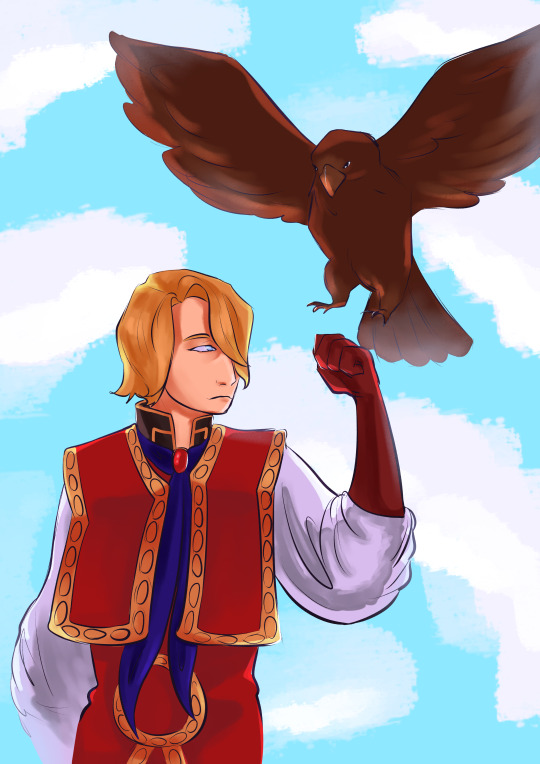
Quick Mahmut
#mahmut tughril#tughril mahmut#shoukoku no altair#my art#gonna draw more lster just wanted to post this now
5 notes
·
View notes
Text
Hello there Tughril Mahmut Pasha fans.
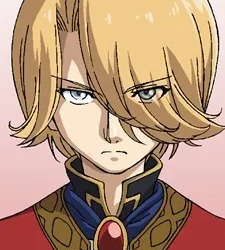
0 notes
Text
Happy Birthday Takashi Yamazaki from Cardcaptor Sakura and Cardcaptor Sakura: Clear Card, Yuuji Sakamoto from Baka and Test: Summon the Beasts, and Tughril Mahmut from Altair: A Record of Battles who all share the same birthday. You guys are amazing.
#takashiyamazaki #cardcaptorsakura #cardcaptorsakuraclearcard #kādokyaputāsakurakuriakādohen #ccs #kādokyaputāsakura #yuujisakamoto #bakaandtestsummonthebeasts #bakatotesutotoshōkanjū #tughrilmahmut #altairarecordofbattles #shōkokunoarutairu
https://www.instagram.com/p/DKYievMuRb4/?igsh=dHRuZnRxbGg2MjJ4

0 notes
Text
Group B Round 2


[image ID: the first image is of Isaac, a pink creature with 2 clawed feet, spikes emerging from the bottom of its round mid section, a flap that looks like a closed eye on that same mid section, and a veiny orb in its mouth. the second image is of Tughril Mahmut, a young man with light colored hair. his clothing is regal, and a large hawk sits on his shoulder. he's holding an a long, thin object with a large bulb on one end, covered in spherical jewels. end ID]
Isaac
corpse of a bad guy turned into a dog basically
Tughril Mahmut
First of all : WHY ISN'T THIS MANGA MORE POPULAR !? The story is full of twists with well written characters that dies memorably, great (GREAT) visuals that I could look at for hours just to see all the details of the clothes and backgrounds. It takes places in a past Turkiye that's in a war. Also, if any of the thing I say aren't correct, I'm deeply sorry. Mahmut is the adopted son of a pasha named Sehir Halil, a sweet old man that everyone would be the great-children of. His clan was killed when he was little and he's one of the only survivor (yes, I'm a big fan of Kurapika too) Because he was saved by Sehir, Mahmut decided he wanted to be a pasha himself and became the world youngest pasha at seventeen (if I'm not mistaken). He then got on a journey around Turkiye and other countries to make agreements with them and win the war against the Baltrhein Empire accompanied of his voltour, Iskander (yep, because every badass characters got a badass pet). Mahmut is smart aaaaand... I don't know how to describe a character. This will be my downfall one day. Anyway, I like how he grow in the story and the way his relationship with Sehir is portrayed. Mahmut have impressive tactical skills that have more than once saved his country (I always enjoy seeing how he uses things in his advantage and understanding his plans). He have great fighting and riding skills that are so fucking well drawn in the manga. Honestly I wish I could submit other characters since the entire cast is so good, but I don't have the strength to.
#obscurecharactershowdown#group b round 2#obscure poll#isaac awful hospital#awful hospital#tughril mahmut#shoukoku no altair
17 notes
·
View notes
Text
I made a meme

#将国のアルタイル#zehir zaganos#tughril mahmut#shoukoku no altair#kara kanat suleyman#abiriga#cyrus gios apollodorus
25 notes
·
View notes
Text
After long-ass hiatus, here I come again bringing another fic about Zaganos' silent pining journey... based on chapter 136 (check it out, crazy zgmf stuff)
5 notes
·
View notes
Photo
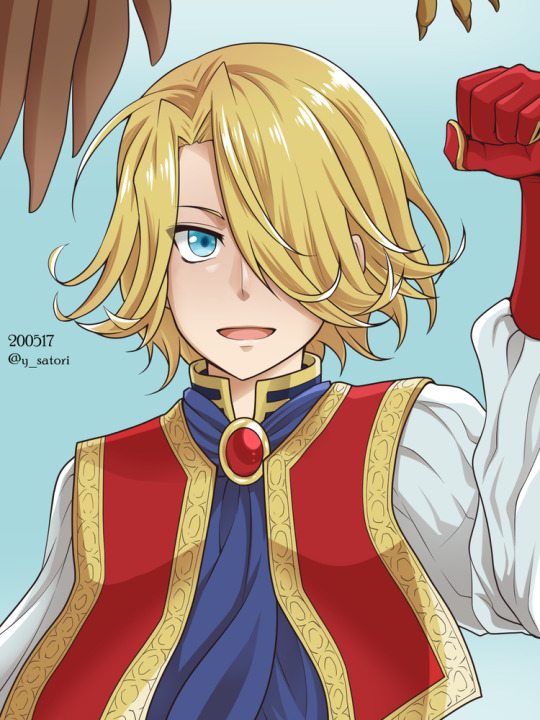
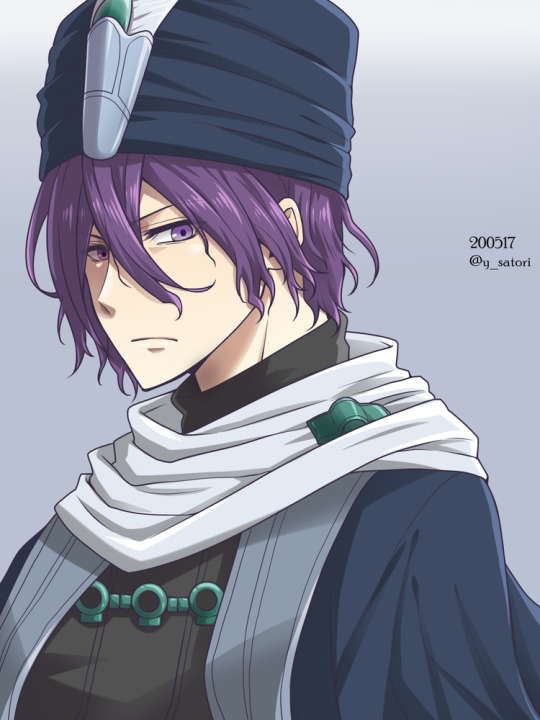
リクエストで。将国キャラむずかしい!
2020/05/17
27 notes
·
View notes
Text
lel posting my white bg version here to hurt everyone's eyes (sorry)
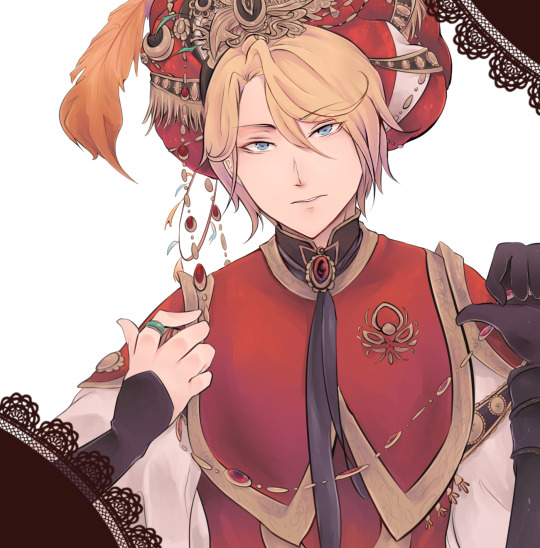
53 notes
·
View notes
Photo
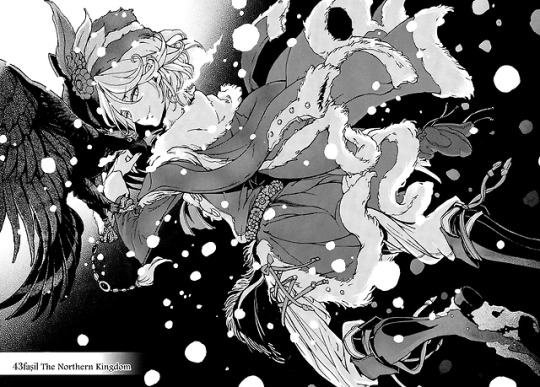
88 notes
·
View notes
Text
Ottoman as Turk, or Islam itself as Turk?
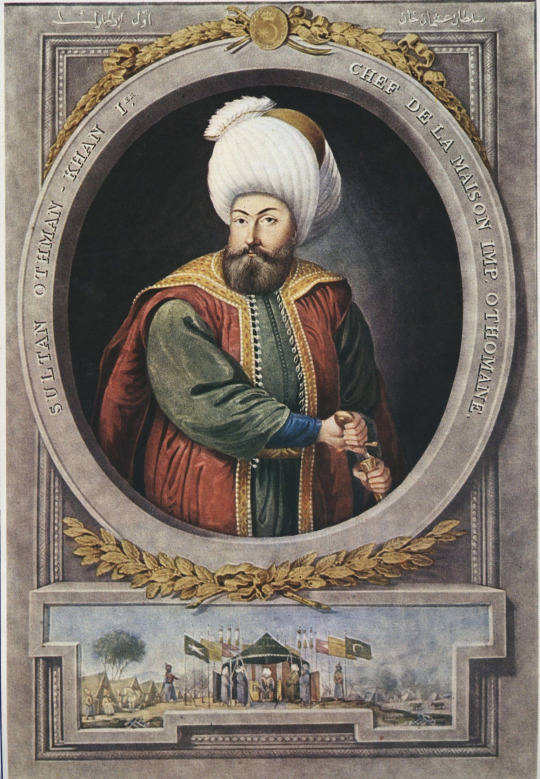
Osman I, founder of Ottoman Empire.
Islam was portrayed as a race. Strange but true—this is what modern European historians have recorded from the archives of classical scholars. This perception was especially common in early Ottoman history, from the First Interregnum to the conquest of Constantinople, followed by the Second (and very long) Interregnum, filled by the 80-year Stratocracy era until the Ottomans’ second rise under Bayezid II and eventually, their fall.
The term Turk itself was rarely used in general Ottoman discourse. Instead, the term originated in Europe. As early as the 12th century, Italian states—dominant players in eastern Mediterranean trade—referred to Anatolia (then under the Seljuks of Rum) as Turchia. This label spread and evolved, eventually becoming widely used across Europe, especially during the rise and expansion of the Ottomans into Eastern Europe.
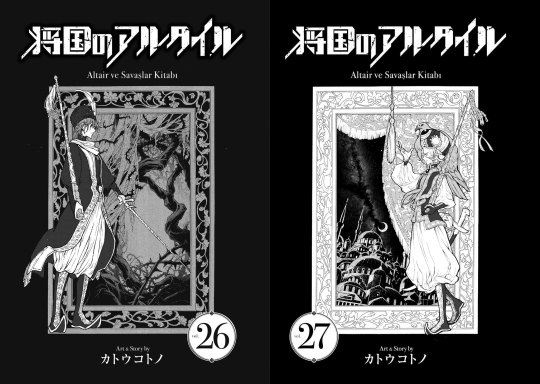
Zehir Zaganos and Tughril Mahmud
The Ottomans themselves were never founded on purely ethnic Turkish elements—not even during the Stratocracy. A simple example: Tughril Mahmud and Zehir Zaganos. Zaganos Pasha, in fact, came from the exiled nobility of the Balt Rhain Empire—from family of Eugene Camus. As for Mahmud Pasha, long thought to be of original Turkish descent from the Tughril tribe, he, too, was not ethnically Turkish. His great-great-grandfather was a noble of the Byzantine aristocracy in central Thessaly: Alexios Angelos Philanthropenos.
(This explains his fair features and blond hair, which contrasted sharply with the typical Anatolian Turks.)
Interestingly, most people—including his adoptive father, Sehir Halil—never knew this truth. The first person to realize it was Kyros, when Mahmud frequently addressed him as Amca (Turkish for "uncle" or "cousin"). Curious, Kyros once asked why he was treated as if they were kin, and Mahmud replied:
“You still haven’t realized your father is the great-grandson of the last emperor of the Palaiologos dynasty?”
Kyros admitted he had no idea of his own lineage until that conversation. It’s important to note: the Angelos and Palaiologos families were both noble Byzantine bloodlines—with the Palaiologoi ruling in Constantinople and the Angeloi in Thessaly—long before the Stratocracy even existed.
There were more than just one or two pashas with non-Turkish backgrounds. Like Mahmud, Karaman Mehmed Pasha, whose name points to his origin, wasn’t Turkish either. He hailed from Persia and was rumored to be a direct descendant of the Sufi mystic Jalaluddin Rumi.
Radu Bey of Wallachia, Hass Murad Pasha, and Mesih Pasha, both were also descended from Greek nobility in Phoenicia.
Even prior to the Stratocracy era—especially during the formative years of the Ottoman Empire—elements of the Akıncı cavalry were not exclusively Turkish. For instance, Evrenos and Mihali were from Byzantine Nicea, converted to Islam, and went on to become founding beylik families of the early Ottoman Empire, their influence lasting even into the final years of the Stratocracy.
The term "Stratocracy Turkiye", frequently mentioned in this blog, is in fact a modern label—yet it was not recognized in the archives of the Ottoman Porte. The debate among scholars is not centered on the term Stratocracy itself (as first coined by Sir Robert Filmer), but rather on the word "Turkiye" within that label.
The archives in Istanbul refer to this era not as Turkiye, but rather as the Pashalik (or Pashaluk in English, Paşalığı in Ottoman Turkish), meaning “the realm of the Pashas,” governed through a system of 13 ministers or viziers. However, this term mainly appeared in official documents. In colloquial speech, various other labels were used.
For example, in his debate with the divan pashas, Zaganos Pasha referred to the Stratocracy simply as the Asker or Kuruluş ülkesi ("the military country" or "the founding realm"). Mahmud Pasha did not use any specific term for the era—he merely called it the Devlet ("state"). Sehir Halil referred to it as the Kolordu, a term implying a military state system divided into corps or brigades.
This diversity in naming conventions not only puzzled modern Turkish historians, but even contemporary classical chroniclers were often frustrated by the lack of identity. One of them, Şükrullah Çelebi, derided this Ottoman interregnum as "a state without identity."
The modern term “Turkiye” used to refer to this era was first coined by Edward Gibbon, later echoed by Caroline Finkel, and subsequently adopted by Gábor Ágoston in his book The Last Conquest. However, in Ágoston’s case—as someone who conducted in-depth archival research in Istanbul's military and state records—he explicitly stated his discomfort with this terminology, because he could not find a single reference to the word “Turk” in his findings.
Ágoston did not outright accuse Gibbon of being incorrect, but rather pointed out that Gibbon likely had his own rationale. Gibbon studied Ottoman history through a Eurocentric lens, which mirrored the European habit at the time of labeling the Ottomans and their regimes—including the Stratocracy—as Turks.
This perspective is also emphasized by Bernard Heykel in his book Revival and Reform in Islam: The Legacy of Muhammad al-Shawkani, where he explains how the popular European label Turchia stemmed from an emotional, often hostile association, used to identify their enemies. Sometimes, even religious conversion was perceived as a transformation: those who embraced the faith of Muhammad became "Turks."
Interestingly, this wasn’t unique to the Ottomans. Heykel notes that this baseless emotional projection was repeated often in how Europe viewed any Islamic dynasty.
Before the Ottomans, Spanish Muslims were called Mooriscos or Moors.
North African and Arab Muslims were labeled Saracens—an umbrella term rooted more in emotion than in accuracy.
Nevertheless, the term “Turk” did not always carry negative connotations for the Ottomans. In some contexts, it served to define the Ottomans themselves, rather than diminish them.
This perspective emerged among contemporary Arab Muslim historians and rulers who lived during the time of the Ottomans. Among them were: Ibn Ṭūlūn, Abdulaziz ibn Hisham of Jeddah, and Imam al-Qasimi, the Zaydi ruler of Yemen.
However, the sentiment of associating Islam as a race has persisted—even to this day. In the Balkans, particularly in Greece and Serbia, where anti-Turkish sentiment remains strong, many locals continue to accuse Muslim converts in their communities of changing their nationality, echoing the same fanatical mindset of medieval Europe.
Dr. Stef Keris, a Greek convert to Islam, once lamented facing similar accusations: when he embraced Islam, people around him claimed he had “become a Turk.”
Ironically, this kind of standard is never applied to Christianity. As noted by Virginia A. Aksan, in an interview with Slavic-speaking villagers in Ohri who were observing the ruins of a Byzantine site:
When asked whether they knew who had built the ruins, they replied: “The free men—our ancestors.” The interviewer followed up: “Were they Serbs, Bulgarians, Latin, Greeks, or Turks?” The boys responded: “No, they were not Turks; they were Christians.”
footnote:
¹ Gábor Ágoston, Encyclopedia of the Ottoman Empire, s.v. “Turk,” p. 350.
² Bernard Heykel, Revival and Reform in Islam: The Legacy of Muhammad al-Shawkani, p. 61.
³ Virginia H. Aksan, Ottoman Empire Besieged, p. 23.
⁴ Porte Archives: Codex on Perceptions, Vol. II, fol. 23/a.
⁵ Risâlet-i Maḥmûd Pasha fî Ḥayâtü’d-Dewlet, fol. 118/b.
#shoukoku no altair#altair a record of battles#kotono kato#ottoman#semificto#trivia#sehir halil#tughril mahmut#zehir zaganos
18 notes
·
View notes
Text
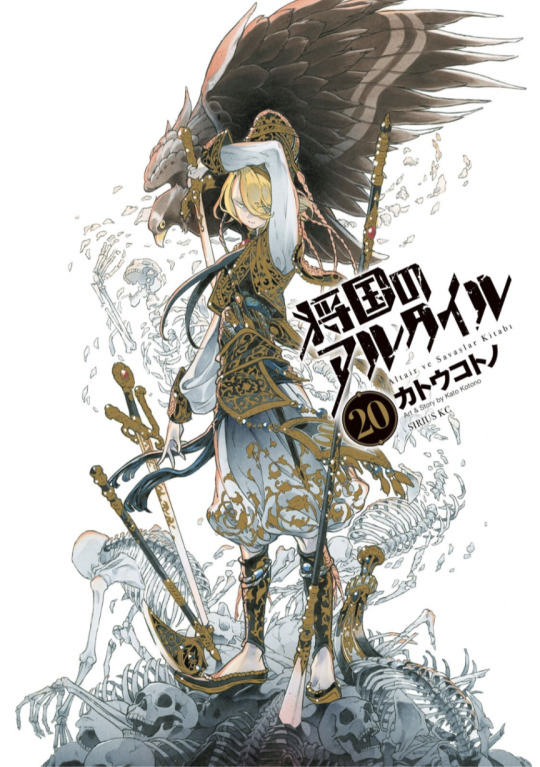
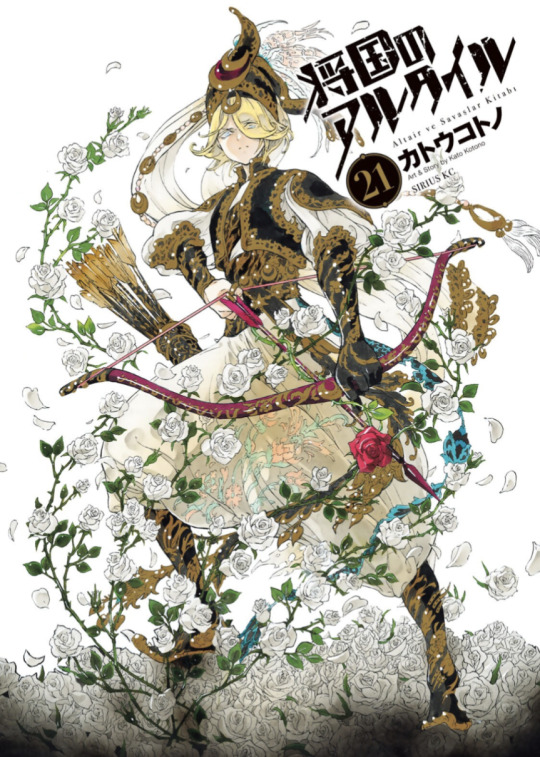
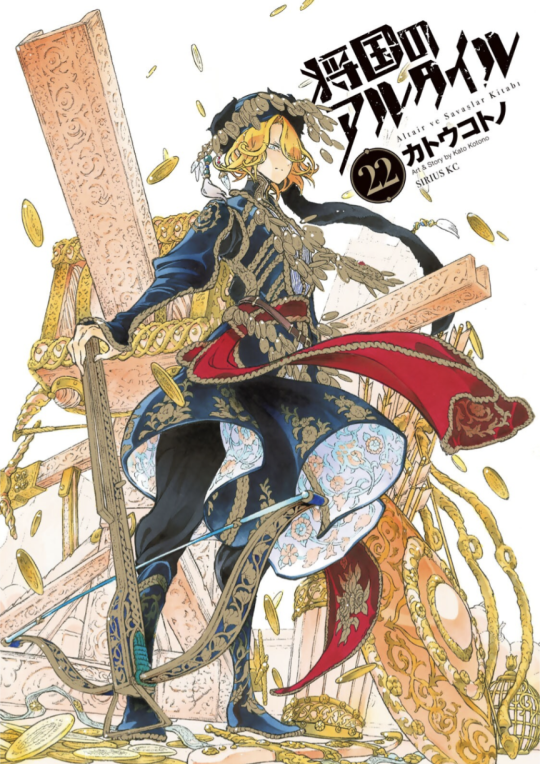
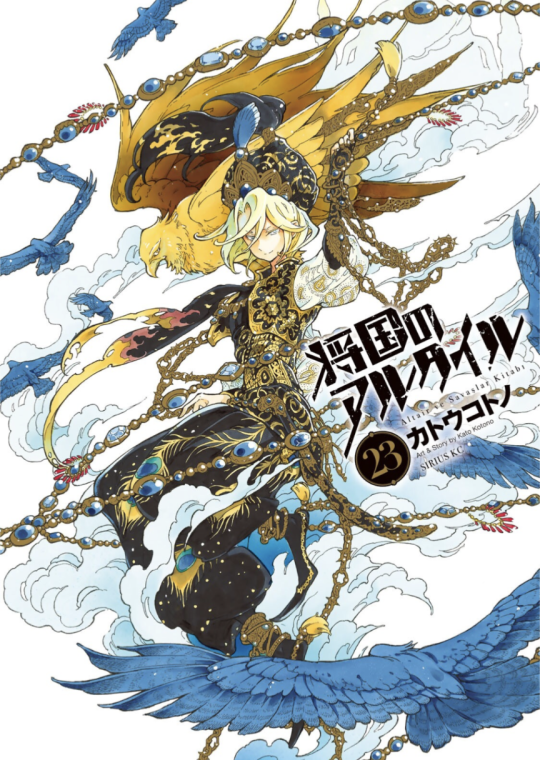
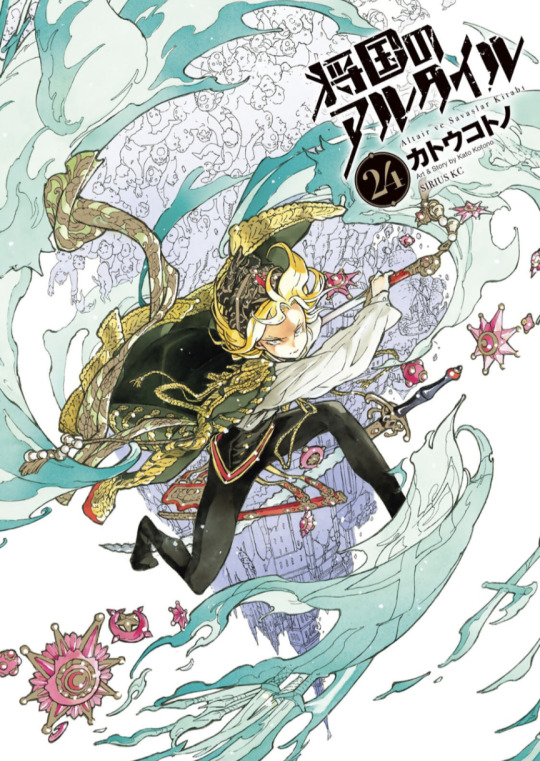
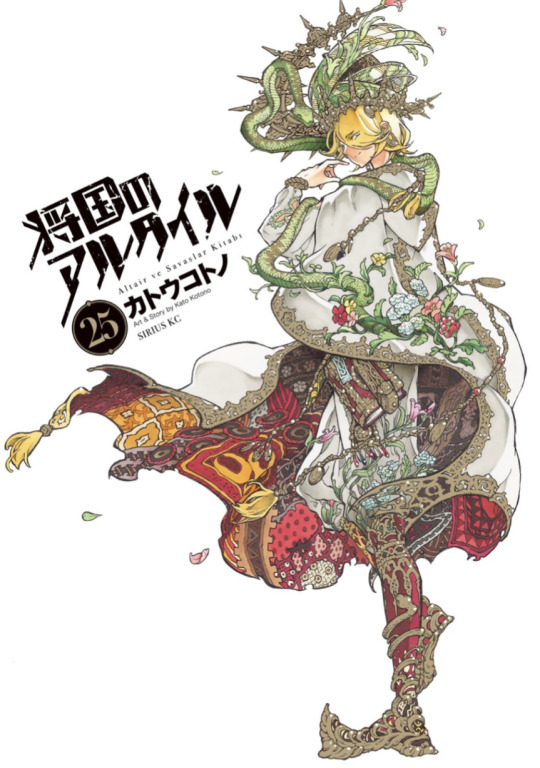
Shoukoku no Altair Volumes 20-25
#shoukoku no altair#kato kotono#shokoku no altair#altair a record of battles#artwork#volume covers#tughril mahmut#iskender
29 notes
·
View notes
Photo
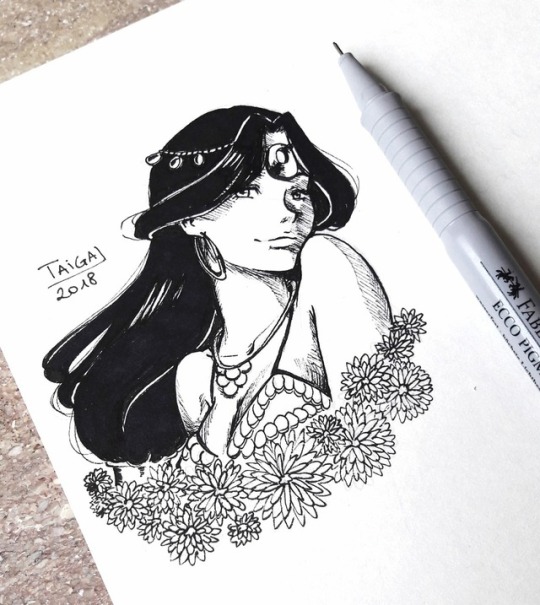
🦋inktober || day 15 🦋Şara || Shoukoku no Altair
#shoukoku no altair#altair a record of battles#altair: a record of battles#altair#shara#sara altair#sna#mahmut pasha#zaganos pasha#zehir zaganos#tughril mahmut#inktober#inktober 2018#inktober 2k18#inktober 2018 day 15#inktober day 15#inktober 2k18 day 15#anime#manga#illustrator#illustrators on tumblr#art#artists on tumblr
108 notes
·
View notes
Photo
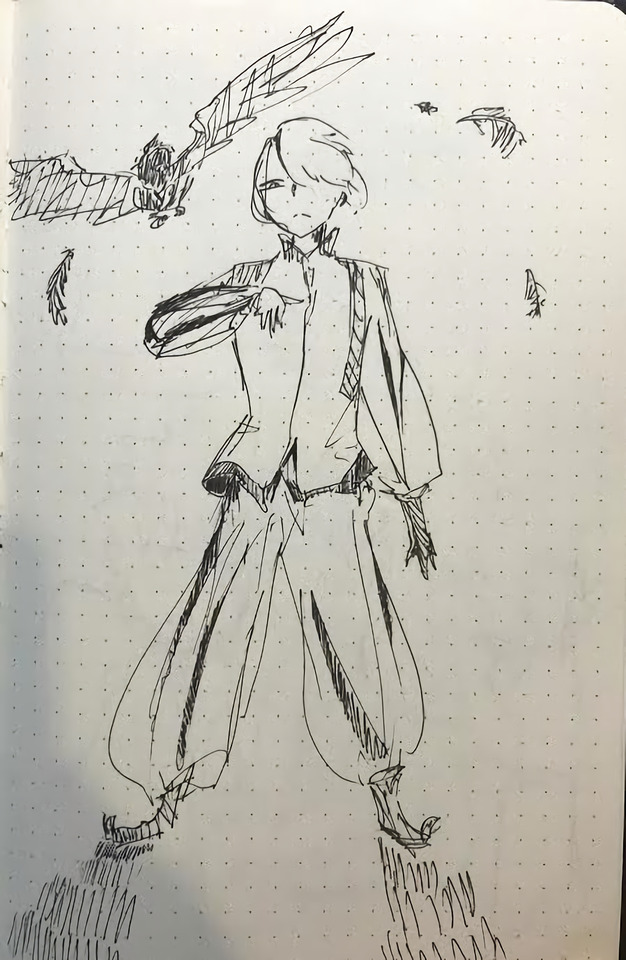
my one and only contribution to the Altair fandom
6 notes
·
View notes
Text
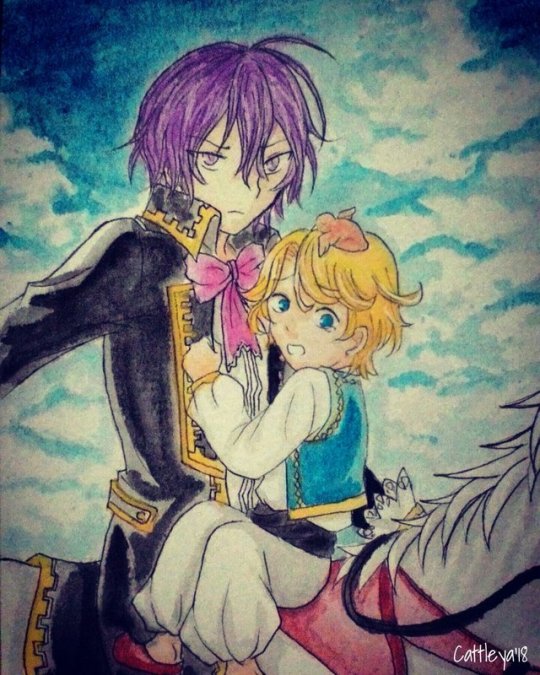
Astolphe-kun & Mahmut-kun
15 notes
·
View notes